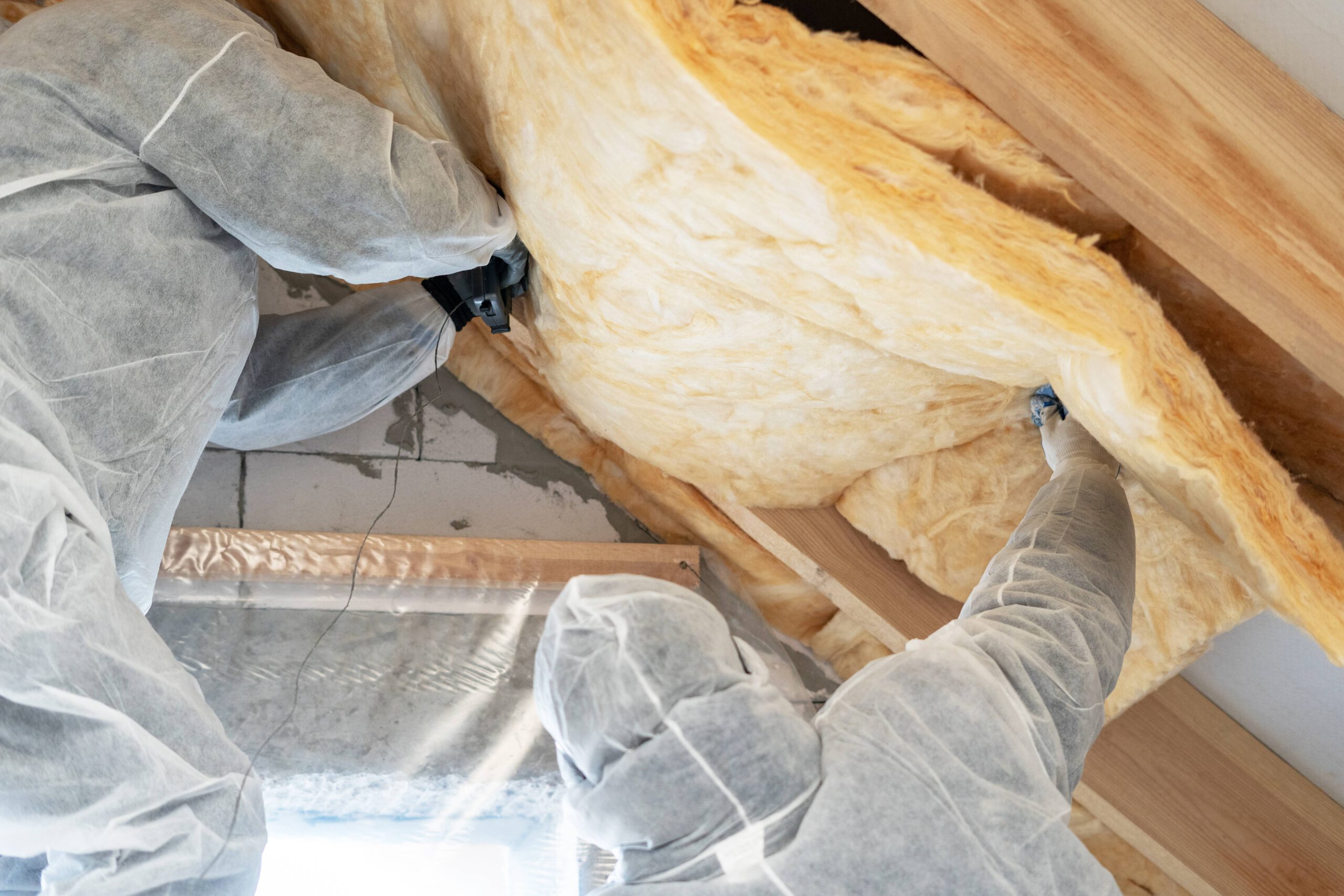How Long Should Attic Insulation Last?
by Odie Kuhlman

A well-maintained fiberglass insulation can last up to 80 years. Homeowners should begin checking the material around year 15 as moisture and critters can chip away at it over time.
Signs that your insulation may need replacing include inconsistent heating, high energy bills, and visible signs of rodent droppings. Depending on your home's needs, there are several types of insulation to choose from:
Fiberglass
Fiberglass is one of the most commonly used forms of insulation. It’s cheap, easy to install and available at most home improvement stores. It’s also highly effective at reducing heat and air loss in your home. However, it isn’t immune to damage or wear and tear. In fact, it starts to degrade after about 15 years.
This happens when the fiberglass is exposed to moisture, mold and mildew. This in turn affects the effectiveness of the insulation and can weaken the underlying materials like the roof, attic floor and rafters. It’s important to keep an eye out for signs that your fiberglass is in need of replacement. This includes fallen chunks on the attic floor, a wet attic or if it isn’t retaining its R-Value anymore.
The good news is that if you have fiberglass insulation, it can last for up to 80 years under optimal conditions. This means it’s a great investment for your energy efficiency and comfort level within your home. However, it’s essential to replace it after about 15 years or if you notice the dreaded wet attic.
Another common form of insulation is cellulose. This is made from recycled material and is more eco-friendly than fiberglass. It’s also known to be more effective at preventing air leaks than fiberglass. However, cellulose can start to degrade after about 20 to 30 years. This is because it’s prone to water damage, mold and mildew, making it less effective over time.
While cellulose is still an efficient choice for your home, it’s worth checking out new options if you’re looking to make the switch. It’s also a good idea to hire an attic specialist to inspect your home’s insulation on a regular basis. This will help you to keep track of the age of your insulation and nip problems in the bud before they become more serious. Having an attic inspection performed is also a great way to identify any potential health issues you may be facing due to toxic materials like asbestos and lead paint. This will help you make an informed decision about what kind of insulation is right for your home.
Cellulose
Cellulose insulation, also called cellulose fibers, is an eco-friendly option for home insulation. It’s made from recycled paper and is treated with fire-retardant chemicals. This loose-fill insulation is easy to install in attics and walls and can be blown into wall cavities from inside or outside the home. In new construction, the cavity is sealed with either fiberglass batts or fiber-reinforced plastic sheeting that doubles as a vapor barrier before cellulose is blown in. This strategy prevents moisture from damaging the interior drywall and framing.
The average lifespan of attic insulation varies by type and installation method. Fiberglass insulation usually lasts for 80 to 100 years, though it may lose effectiveness as it degrades. This is particularly common in humid climates, where high humidity levels lead to mold and mildew growth, which reduces insulating power. Insulation in attics is susceptible to moisture damage from roof leaks, rain and floodwater. Insulation should be checked and replaced regularly to protect your home from energy loss.
If you have a home with older fiberglass or cellulose insulation, it’s worth having professionals test and inspect it for moisture problems. This can save you money on energy bills and keep your family healthy by preventing the spread of harmful airborne allergens like dust mites.
In addition, if your home is leaking heat in the winter or cooling in the summer, you can save money by having professional insulation installed in your attic. Insulation in your attic helps to control the flow of hot and cold air throughout your home, reducing the strain on your HVAC system.
If your attic insulation is damaged or contaminated, it will need to be professionally tested and removed before you can replace it. Our attic specialists are trained to handle these materials safely, so you and your family will be able to stay safe and comfortable while the work is being done. This is the best way to ensure your insulation stays in good working condition and keeps performing its essential job of keeping your house warm in the winter and cool in the summer.
Spray Foam
When properly installed, spray foam insulation lasts for the lifetime of your home. This is largely due to its innate ability to stick to wood sheathing, studs, and drywall surfaces, as well as its high R-value. It also has a greater ability to prevent air transfer than other insulation types.
However, just like all insulation, it can wear down over time. This can be caused by a number of factors, such as moisture. If water seeps into the attic or other areas of your home, it can damage and degrade the insulation.
It’s important to talk to your insulation contractor about a maintenance plan. This includes regular check-ups to ensure that the insulation is performing properly. It’s also a good idea to look for a reputable, licensed professional when installing your insulation. Check their credentials, reviews, and Better Business Bureau rating to find someone that you can trust.
Whether you choose fiberglass, cellulose or spray foam, it’s essential to maintain the proper R-value for your area. R-value is a measurement of the insulation’s effectiveness and its ability to resist air transfer. Your R-value will be different depending on your region, but generally, you want to shoot for at least R30 or R60.
Another factor that can affect the longevity of your insulation is how often it’s cleaned. You’ll need to clean your insulation regularly to remove dust and other debris that can make it less effective over time.
If you haven’t noticed any signs of poor insulation, then you probably don’t need to worry about replacing it right away. But if you start noticing high energy bills, ice dams on your roof, or water stains on your ceiling, it’s a good time to get it checked out and consider swapping it out.
While it may seem counterintuitive, it’s best to hire a professional when it comes to your attic or other area of your home where you need insulation installed. An expert knows what they’re doing and can do it quickly and efficiently. This can save you a lot of money in the long run, especially if you need to replace your insulation due to damage or degradation.
Rigid Foam
Insulation is a key part of a well-built home. It keeps heat in during winter and out in summer, helps lower energy bills, and creates a more comfortable living space in general. As such, it’s important that it lasts as long as possible. The length of time attic insulation can last varies depending on the materials used, the condition of the insulation, and factors like humidity and the presence of animals or pests. Generally, insulation that is exposed to moisture and animals will degrade quicker than insulation that is protected from these elements.
Fiberglass, cellulose, and rock wool insulation can all last up to 80 years in attics when they are protected from animals and moisture. However, these types of insulation should still be checked at least around year ten for any signs that they may be compromised.
These types of insulation are made from a combination of natural and synthetic components. While they are good at preventing air leaks, they do tend to settle and lose their R rating over time. They are also more prone to issues resulting from water damage and flooding. Depending on the material used, some forms of blown-in attic insulation are more flammable than others.
Attic insulation removal Houston must be done if the insulation is damaged in any way. The most obvious sign that your attic insulation needs replacing is if it appears to be falling apart or has become wet. Another indicator that your insulation is reaching the end of its lifespan is if you see evidence of mice droppings or similar indications of pest infiltration. As long as you regularly check your attic insulation and replace it when necessary, you can be sure that it will keep your home safe from the elements and help you save money on energy bills. In addition, keeping your attic insulation in great condition will make your HVAC system work less hard and help you stay more comfortable in your home. Contact a local professional for more information on attic insulation. They can inspect your existing attic insulation and recommend the best options for your home.
A well-maintained fiberglass insulation can last up to 80 years. Homeowners should begin checking the material around year 15 as moisture and critters can chip away at it over time. Signs that your insulation may need replacing include inconsistent heating, high energy bills, and visible signs of rodent droppings. Depending on your home's needs, there…
Recent Posts
- Exploring the Harmony of Yin and Yang: A Journey through Traditional Chinese Medicine
- Exploring the Harmony of Yin and Yang: A Journey through Traditional Chinese Medicine
- Lawn Care Spring Branch Advocates for Property Care: Combatting Weed Growth and Preserving Curb Appeal
- Lawn Care Spring Branch Advocates for Property Care: Combatting Weed Growth and Preserving Curb Appeal
- Revolutionizing Lawn Care in Orlando: Introducing Innovative Lawn Mowing Service
